Can Flex Duct Be Used for Heating?
In this blog, we will answer the question ‘Can you use flexible duct for heat?’
To prevent mould, fresh air should always be introduced into your dwelling daily, as it helps to regulate temperature and reduce condensation. Introducing fresh air can be as simple as having a ventilation routine, or installing extractors or PIV systems.
Knowing whether or not flexible ducting can be used in environments of a higher general temperature is important to know for those who have limited space for regular ducting in a high-temperature environment like some industrial settings.
I-Sells is here to provide the answers you need whilst also supplying you with all the information you need to combat mould and have a well-ventilated home.
Flexible ducting explained
Flexible ducting (also known as flex ducts, or flexi ducts) serves the same purpose as regular ducting, the function does not change, and the only change is the conduit in which the air travels. There are nominal differences between the two that may make one more effective than the other, but this is purely subject to your needs.
Regular ducting is solid, it can not be manipulated into specific spaces unless it is made specifically for that space. Flexible ductwork however is specially designed to be manipulated into spaces during installation ( and after if necessary.)
Flex ducts are easier to manipulate and therefore can be used in cabinets, a variety of layouts and other small spaces. (this is also thanks to its accordion-styled design.)
Advantages and disadvantages of flex ducts
Advantages
- It is flexible by nature which by default makes it easier to install & manipulate post-installation if needs be.
- Can be installed in tight or confined spaces.
- Option for transparent ducting to be able to see potential blockages.
- Can be used as a temporary ducting system
Disadvantages
- Due to the flexible nature of this ducting, there is a higher likelihood of punctures, subjective to placement.
- Regular maintenance checks should be carried out to guarantee efficiency.
- Mostly suitable for internal mounting
Why would I need flexible ducting?
Flexible ducting is ideal for those with limited space but still require ducting. It can also be used as a temporary option. Flexible ducting can come in plastic or metal, applicable in home/accommodation settings, or industrial settings. An example of flexible ducting can be seen in conjunction with vented tumble dryers.
Can flex duct be used for heating?
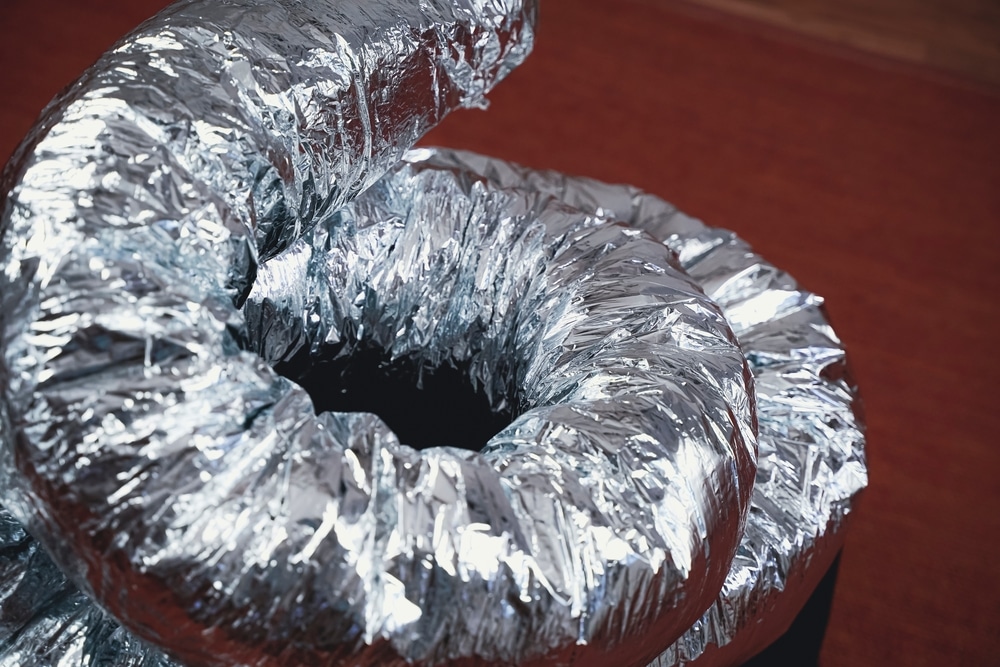
Yes, you can use flexible ducting for heating, whether this be in ventilation systems that distribute heat, or in systems that extract heat.
However, the effectiveness is subject to the type of ducting you choose. Plastic ducting will not be suitable in some high-heat environments, however, metal ducting presents the perfect solution.
Depending on the flexible metal ducting you choose, they can withstand temperatures of -30C all the way to 150C. We must clarify that this will vary depending on the ducting you choose, make sure to read the product specifications before committing to buying ducting from our range.
We understand that you have specific needs and therefore have more questions, get in contact with us directly if there are questions before making a purchase.
What happens if my ducting overheats?
If your metal ducting exceeds its temperature limits, it may become a fire hazard, along with this, you may find the effectiveness of the ducting reduced. Additionally, it may become misshaped, as heat makes metal expand.
Plastic ducting, if overheated will likely melt, plastic ducting isn’t generally placed in environments where this is a possibility so the likelihood of plastic ducting melting would be in the case of a mishap such as a fire.
Does heat affect metal ducting?
Yes, heat can affect metal ducting, specifically round ducting. This is due to metal expanding when it is under heat, though it is more of a concern for industrial environments than home use. Regardless, if you plan on having ducting in areas with high heat and would like some guidance, we are always here to help.
Where to buy the best flex ducts
I-Sells is proud to be the UK’s Leading supplier in ducting and ventilation, so when it comes to buying a variety of quality ducting and ventilation, we are the first port of call for HVAC experts and everyday customers alike.
The flexible ducting we offer comes in a variety of sizes and styles, including varying diameters including an aluminium 100mm diameter, and 102mm diameter . We have certain flexible ducting that is more suited to hot environments, all the way to ducting you can use for your tumble dryer.
Of course, we also offer ducting at different lengths to suit your needs which you can decide before ordering.
Can I use any kind of ducting?
Not necessarily, some ducting is more suited to home environments whilst others are more suited to industrial environments. In some instances, flexible ducting would be more optimal than round ducting, and within that, a plastic option may be better than metal.
Luckily we have two separate categories for this on our website to make it easier for you to navigate depending on your needs. Simply hover over the tab that says ‘flexible hoses’ and choose between ‘commercial’ and ‘industrial’ to begin browsing.
Flex ducts and mould
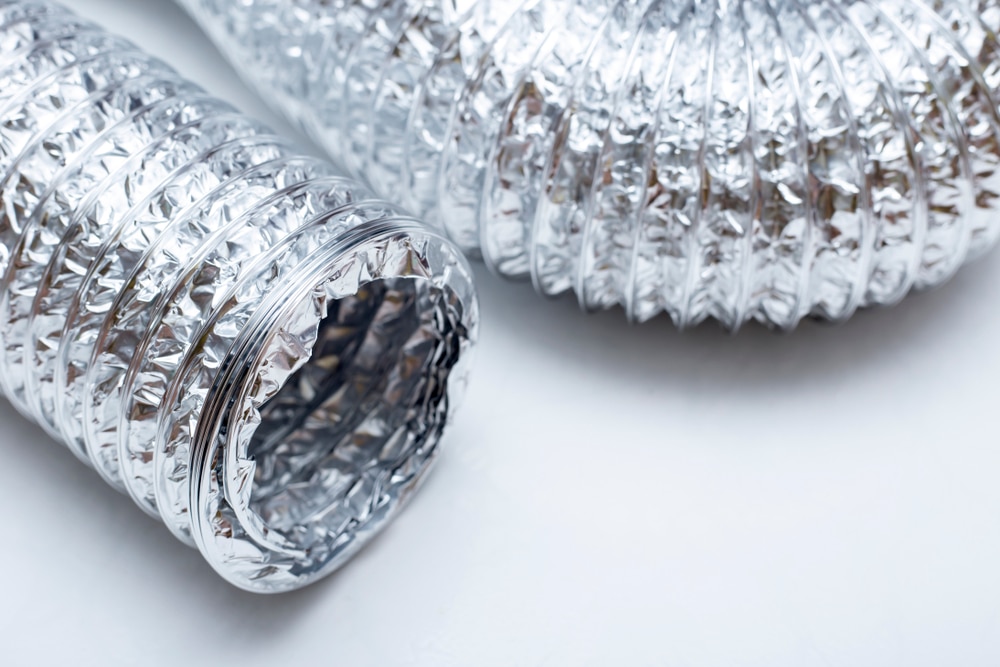
The naturally hot and dry climate within a duct naturally makes it difficult for mould to thrive. But if a duct becomes unsealed, or there is a dramatic change in the duct’s environment that causes humidity, mould can grow within it.
To prevent this possibility, you must make sure your ducting is sealed securely and free from any cracks or holes that compromise its efficiency. You must also make sure the area the ducts are installed is free from free-flowing water or leaks.
What happens to a duct if it grows mould?
If ducting has any mould growing within it, it presents a dangerous health hazard as the spores can spread amongst the whole ventilation system and the dwelling it operates in. As a result, you may have to completely replace the venting system/ ductwork depending on the severity.
Here are some steps you can take to prevent mould on your ductwork:
- Before installing the ducting, make sure the area doesn’t have any leaks or is next to anything that can generate a lot of heat, such as a heating pipe.
- Remove any mould in the room where the ducting will be placed.
- Insulate the ducting
- Track the humidity of the room with a hygrometer.
Canflex ducts be cut?
Yes, it is possible to cut flex ducts, to do this you will need a duct knife or a utility knife, and securing with a metal hose clip. Make sure that before cutting your flexible ducting, you have fully extended it within the space it will be occupying. It should not be coiled in any area except for the end that you intend to cut.
Purchase ducting today

We at I-Sells endeavour to make sure our customers have all the information they need before choosing to invest in our mould solutions. Be sure to visit our blog page to gain knowledge on the wide array of factors and issues surrounding ventilation, mould, condensation, and much more.
We hope to have answered the question ‘Can flex duct be used for heating?’
We understand you may have more questions, Do not hesitate to contact us for more information with regard to whatever you may need our help with. If you’d like to send us an email, click here. For other contact options, see below:
Call us on 020 8463 9696
Visit us at our showroom:
*OPENING TIMES*
Monday – Friday: 8:00 am to 5:30 pm
Saturday: 9:00 am to 12:00 pm
Sunday: Closed
15 St John’s Parade
Sidcup, Kent
DA14 6ES
United Kingdom


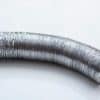
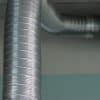
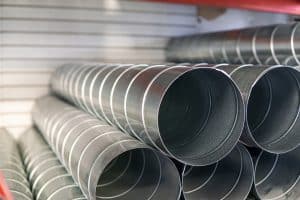
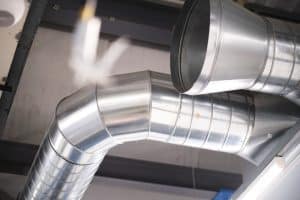























Add comment
You must be logged in to post a comment.